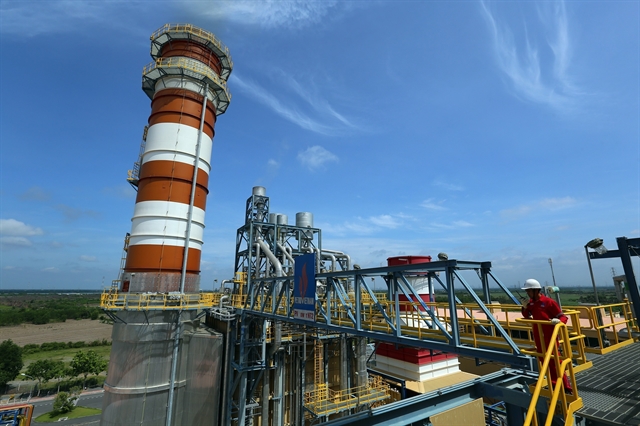 Economy
Economy


|
| PetroVietnam Power Nhon Trach 2 in Đồng Nai Province. VNA/VNS Photo |
HÀ NỘI — After deep corrections, the stock market often witnesses short rallies to wait for new signals. However, as the market is now covered by many negative factors, especially soaring inflation and higher interest rates, defensive stocks, including electric utility stocks, become appealing assets for investors.
Even though many stocks in the industry have performed better when the general market experienced sharp declines, not every business in the defensive industry is defensive in nature.
During the recent fluctuation from early September to the beginning of October, many stocks have shown their defensive nature.
Despite the fact that stocks in the banking, securities, oil and gas industries fell by 15-25 per cent, and even many real estate stocks plunged 25-30 per cent within a month, defensive stocks posted smaller decreases than the market, with some even gaining points.
The water stocks were stable against the storm, while the pharmaceutical stocks and the electric utility stocks inched higher.
Specifically, PetroVietnam Power Nhon Trach 2 (HoSE: NT2) recorded an increase of nearly 2 per cent from September 5 to October 5 after hitting floor prices in three sessions. Matching volume on the stock exchange for NT2 averaged 2.3 million shares per session.
Meanwhile, other ticker symbols in the industry all saw smaller falls than the general market during the period, with a slide of 13.76 per cent, such as Candon HydroPower JSC (HoSE: SJD) down 5 per cent or Vinh Son - Song Hinh Hydropower (HoSE: VSH) down 10 per cent.
Previously, statistics showed that the market benchmark VN-Index also experienced strong volatility in the first half of the year, but defensive stocks, especially electric and water utilities stocks, still moved against the market headwinds with their market prices surging.
Experts said that expectations on rising electricity consumption due to the recovery of demand from the manufacturing industry post COVID-19 were attributed to the higher cash inflows into the electric utility stocks.
Moreover, it also received support from the update to Power Plan 8.
Optimistic outlook for power stocks
In the recent electricity industry report, Viet Nam Bank For Industry & Trade Securities JSC (CTS) said the industrial production and construction sectors always accounted for the highest proportion of the total electricity consumption of the whole system, nearly 96 per cent. Therefore, electricity demand is expected to continue to go up in the coming years as Việt Nam continuously attracts FDI inflows into the industrial production and construction sectors.
In addition, the updated report on the balance of electricity supply and demand shows that the country is likely to fall short of 27.7 billion kWh in 2025.
With favourable hydrological conditions that may last until the first half of 2023, the profits of power enterprises look extremely positive.
On the other hand, Việt Nam will keep importing coal, with coal demand rising to 94-127 million tonnes per year from now until 2035. Coal and gas prices will be stable once the geopolitical conflict is resolved.
"Many coal-fired power enterprises also have bright outlooks for their long-term business operations as the demand for coal and gas power increases, along with operational flexibility and maintenance investment mechanisms," the report said.
In general, with the current uncertainties, defensive stocks and power stocks in particular are often chosen by investors. But once the market recovers and businesses expand, this group of stocks tends to be less volatile as they are considered safe-haven assets.
Investors should be aware, however, that many companies in the defensive sector today deal with the unpredictability that may compromise their innate resilience and defensive nature.
For example, some electricity enterprises are often affected by exchange rate fluctuations, affecting profits. For gas-fired thermal power plants, rising fuel prices (like gas or coal) also negatively impacted their business efficiency.
Additionally, the recent rapid expansion of renewable energy sources (such as wind and solar power) has resulted in an oversupply of electricity in some areas, creating a mixed picture of electricity usage. VNS